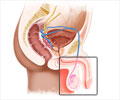The inclusion of fractional exhaled nitrous oxide (FeNO) in asthma diagnosis is showing results with moderate accuracy. FeNo can be a handy tool in asthma diagnosis.

‘The usage of nitrous oxide (FeNO) in the process of diagnosing asthma can be more helpful. This method of diagnosis will be able to provide more reliable results, which will be of help in making therapeutic decisions.’





Researchers from the AHRQ-funded Evidence-based Practice Center at Mayo Clinic (Rochester, MN) identified 43 studies comprising a total of almost 14,000 adult and pediatric patients with suspected asthma who received the FeNO test. This review was commissioned by AHRQ and the National Institutes of Health, National Heart, Lung, and Blood Institute, part of the U.S. Department of Health and Human Services.Asthma can sometimes be difficult to diagnose, and FeNO can be helpful to make therapeutic decisions more evidence based," explained lead investigator M. Hassan Murad, MD, MPH, of the Mayo Clinic. "In addition to a patient's history, the initial test is usually spirometry with an assessment of bronchodilator response. If this test does not confirm the diagnosis, but the index of suspicion for asthma is still high, measurement of FeNO may be helpful to rule in disease; although will still miss some patients with asthma."
Investigators evaluated FeNO data from the selected studies and categorized the results into four cutoff values, less than 20 ppb, 20 to 29 ppb, 30 to 39 ppb, and 40 ppb and over. Patients were also divided into two age groups, those older than 18 and those aged between 5 and 18.
For patients over 18, sensitivity decreased from 0.80 at <20 ppb, 0.69 at 20-29 ppb, 0.53 at 30-39 ppb to 0.41 at >40 ppb. Specificity values were 0.64, 0.78, 0.85, and 0.93, respectively. Cutoff values change the sensitivity and specificity of the FeNO test. Lower cutoffs capture more people with disease but also cause more false positive results.
According to Dr. Murad, "There is no single test that can diagnose asthma. FeNO may be a helpful tool that aids in diagnosis."
Advertisement
Advertisement















